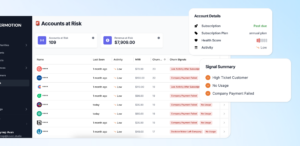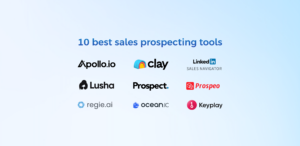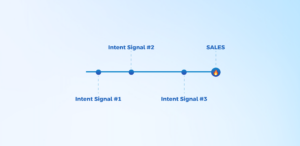Pricing is the single biggest bounce-sensitive touchpoint for SaaS. Yet somehow, it is also the neglected part of the process.
It’s not enough to simply list out the price. In this cut-throat market, you must also justify how it’s better than the options your lead has. The best way to make your case is through a well-designed pricing page.
In this article, we’ll take you through 8 fantastic pricing pages, why they stand out, and key takeaways that’ll help you get a better understanding of pricing page journeys.
TL;DR
- A pricing page is a key element for SaaS companies, but it’s often neglected.
- It should provide clear subscription plan information, be user-friendly, use persuasive copy, and incorporate psychological tactics.
- We’ve highlighted examples of effective pricing pages from various SaaS companies like Mailchimp, Loom, and others below.
- Getting the pricing page right is an important process that can boost conversions and revenue growth.
What is a Pricing Page?
A pricing page holds information regarding different subscription plans, tiers, and pricing options that are offered by the company. The page guides potential customers regarding which plans suit their needs so that they can come to a decision.
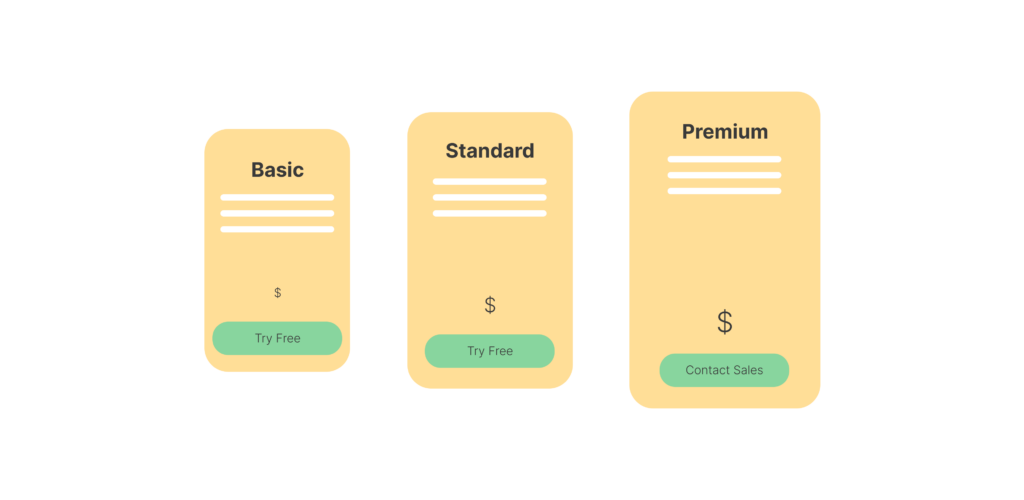
A pricing page should remove doubts, prompt action, and ease the buyer in. It should be packed with data, without burying users with information.
In a world in which most SaaS try to hold on to the information as hard as they can, and relay the pricing information to the sales team, a good pricing page with all the pricing tiers listed down is a rarity that only 15% of SaaS brands have.
Designing a pricing page is a unique point in building a buyer journey.
Hence, getting the right pricing page isn’t always easy. Some SaaS brands nail it though.
Pricing Page 8 Best Examples
We’ve reviewed more than 50 pricing pages and here’s a selection of the best pricing pages from SaaS companies we’ve chosen to inspire and educate you. Let’s jump right in.
1. Lemon Squeezy
We’re starting off with Lemon Squeezy, a subscriptions and payments company for software companies that require multi-currency support.
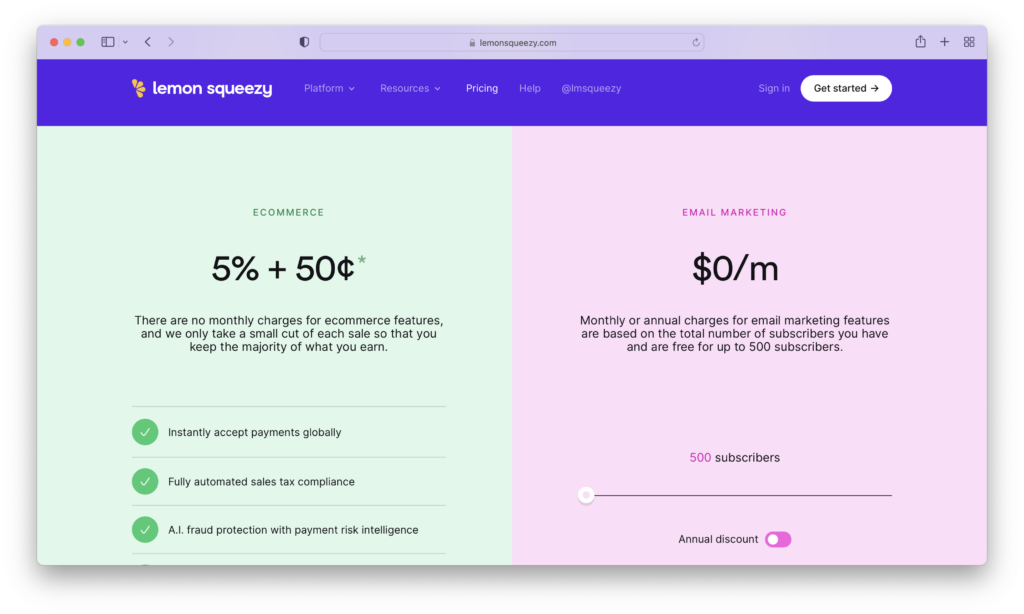
Lemon Squeezy’s elaborate, multi-page sprawl begins with an emphasis on its freemium plan.
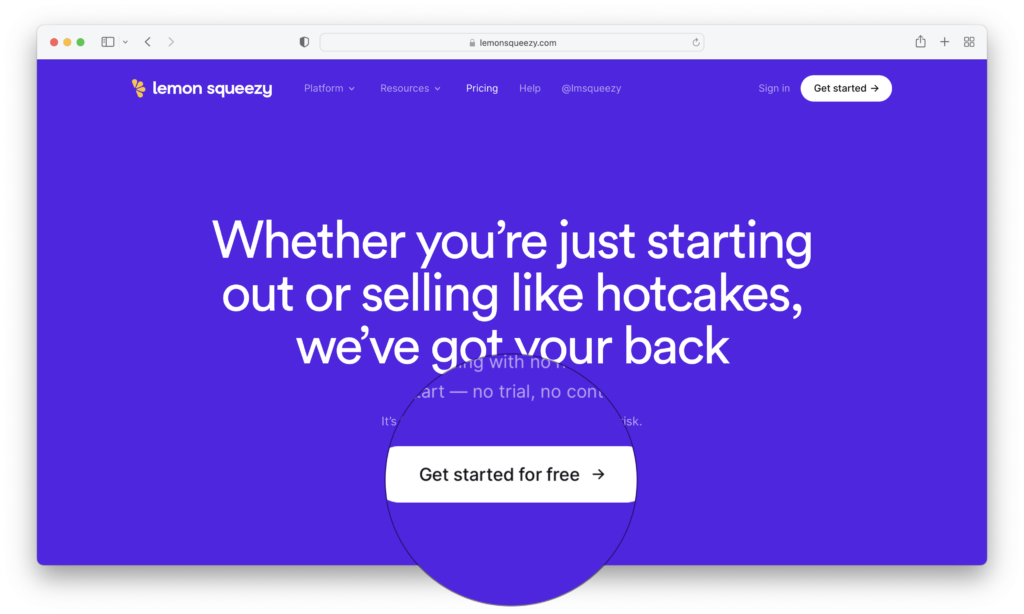
They want you to know that they have an incredible tool, which is free to use. This is in line with their product-led growth marketing.
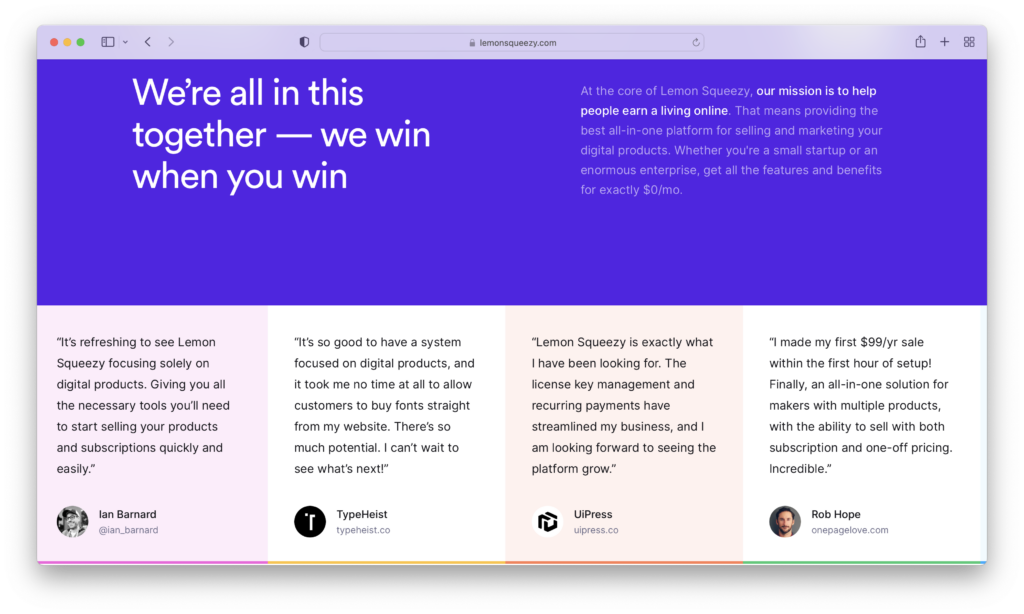
The scroll down comes with testimonials and a mention of how this tool can come to your aid. Next is the table that mentions the solutions and price savings that Lemon Squeezy brings to the table.

The pricing page ends with a generous FAQ and self-help guides to ease the lead in and ensure that the tools stay at the top of their mind even in the event of a bounce.
Lemon Squeezy’s engaging copy and info-packed pricing page is an excellent example of SaaS brands that have an outstanding freemium model. The zero-charge service must be highlighted and presented as the first solution to the customer to accelerate conversions, which later turn into upgrades.
2. Mailchimp
Mailchimp is an email automation and onboarding specialist service tool with a multi-tiered pricing structure split into three sections,
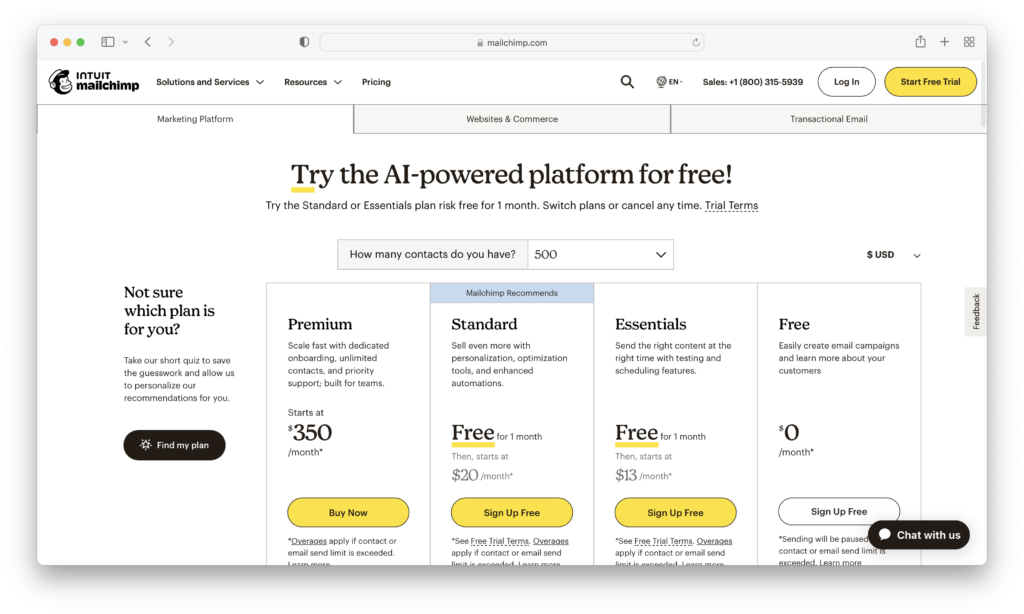
Mailchimp’s pricing page is organized, clean, and info-packed. The three-tiered pricing, which is followed by 35% of the startups, does the job of building parallels to the product.
The pricing page flows straight into the additional copy, which appears to be a way of taming lead bounce.
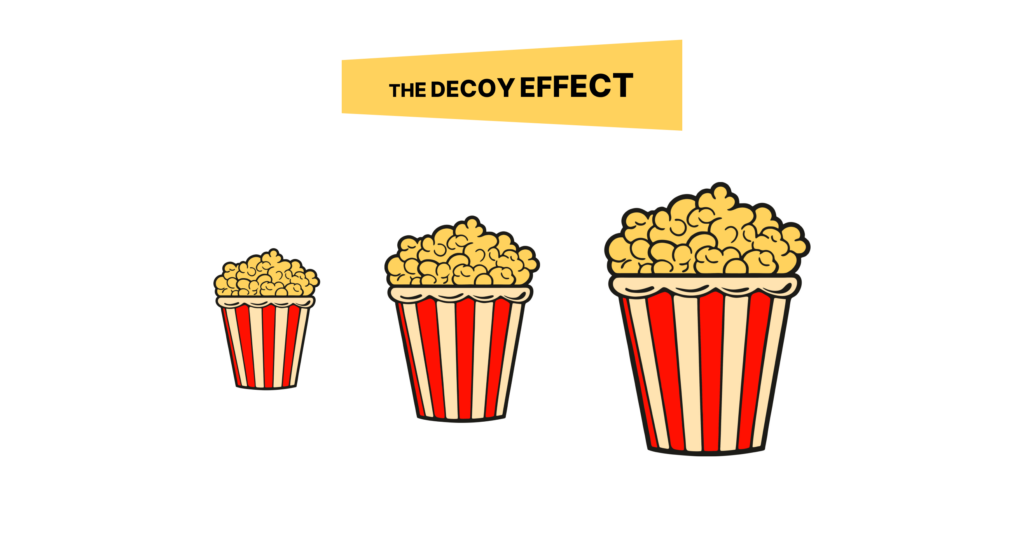
Mailchimp’s pricing page is an exercise in the Decoy Effect, in the reverse version. I find it interesting but impactful, to be honest.
By presenting one extremely unattractive and shocking price point, they soften the blow of a much cheaper price point.
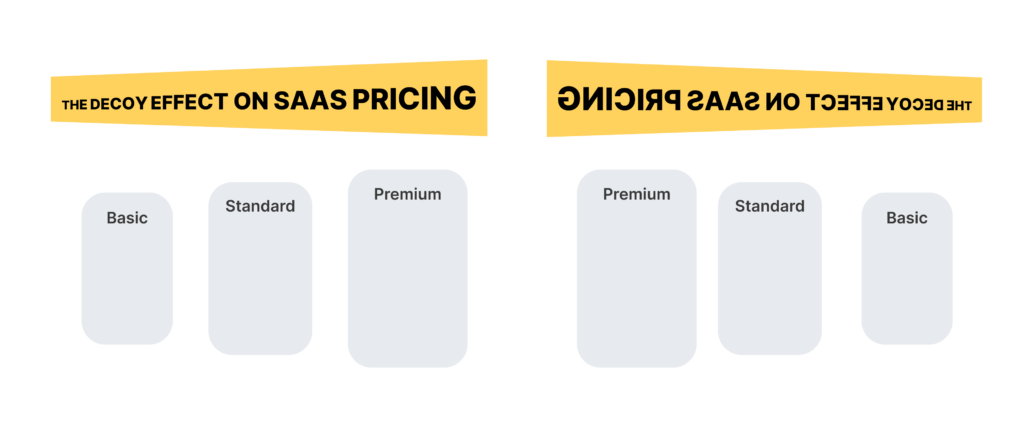
The first price you see is outrageously expensive, $350. And so your brain is anchored to that price and ties the product’s value to it. So when it takes its eyes to the second price, which is $20 and $13, it looks like a steal.
This fantastically designed price page keeps a lot of things in mind and ensures that information is being conveyed in the best way possible.
Customers also get the chance to comprehend which plan would go best with this pricing by letting them decide on the number of subscribers they have. Also, a quick currency change to present their global services.
3. Zapier
Zapier is an automation tool that creates integrations across apps. Its pricing page stands out for its usage-based design.
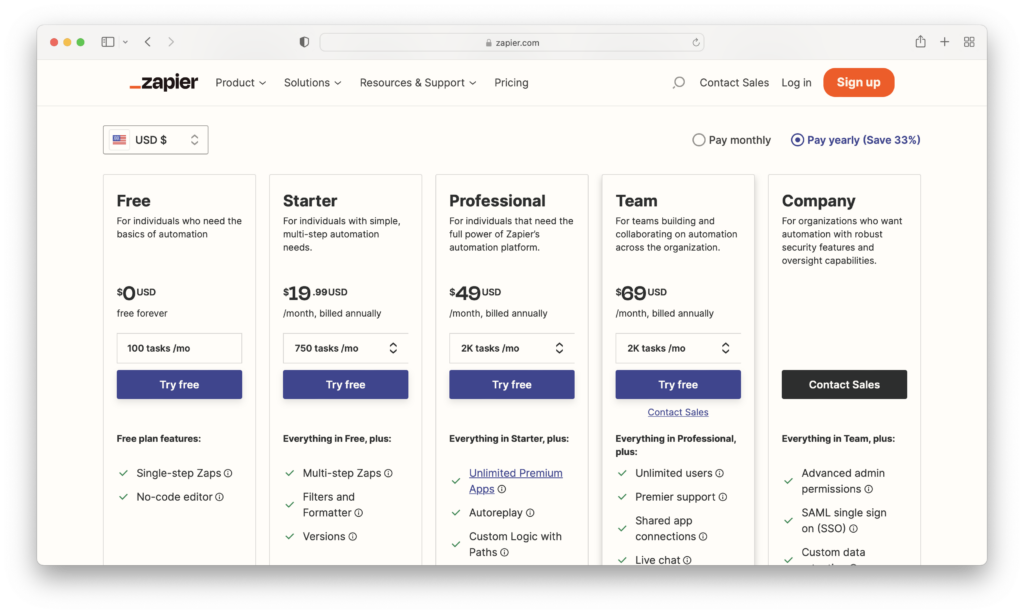
Since this SaaS offers an itinerary of services to businesses across the range, the pricing is tied not just to the offering, but also to the usage.
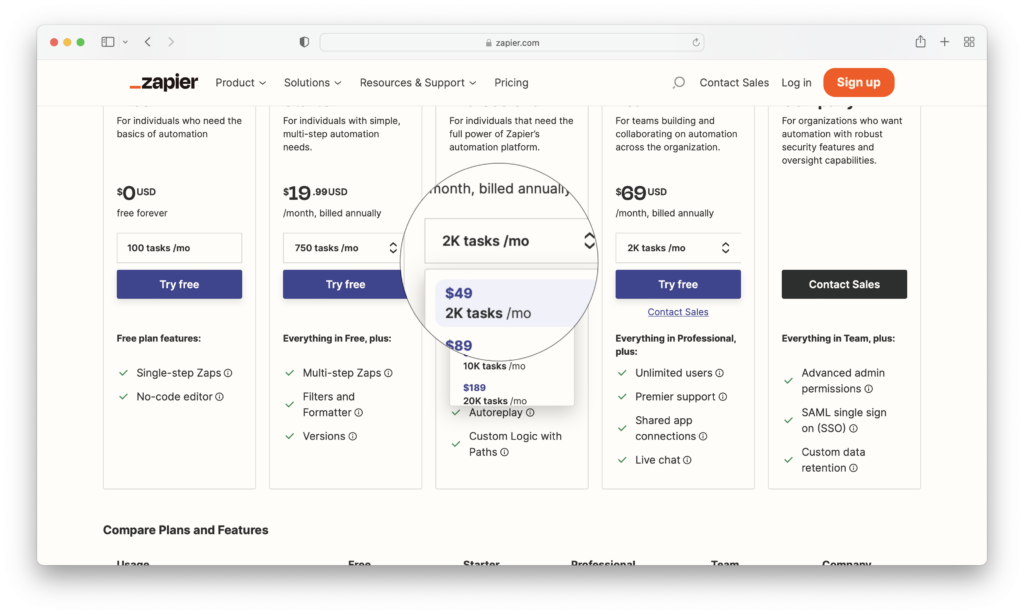
The drop-down box at the beginning of all tiers allows you to select your scale, and the minimal design lets the list shine through.
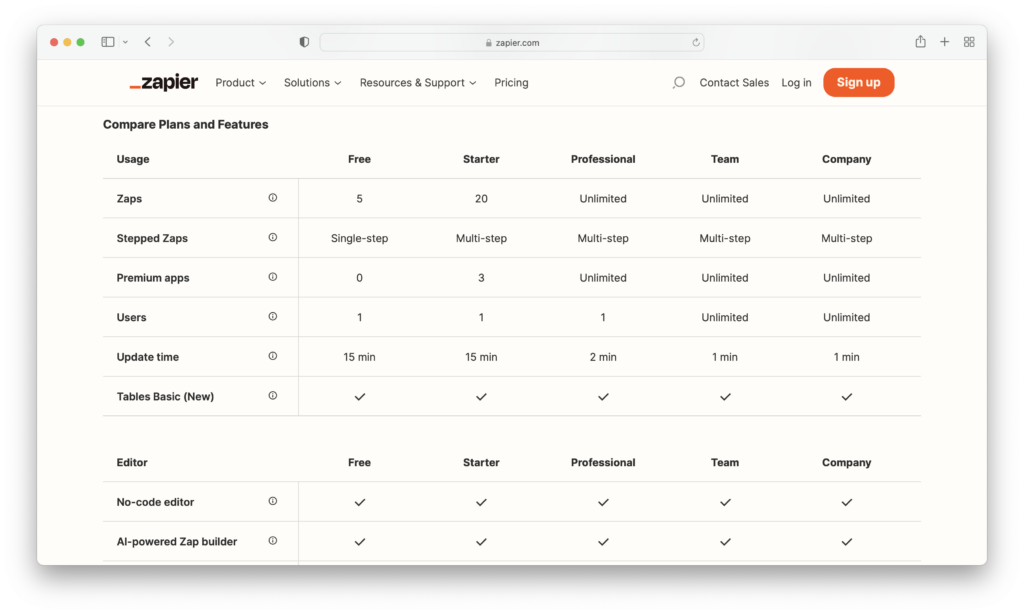
As in almost all SaaS, they have a table for introducing feature sets in the plans.
Zapier keeps it simple, and that shows up in their high conversion rates. Also included on the page is the FAQ section, with straightforward and jargon-free answers to ease the reader in.
4. Todoist
Todoist is a simple list-making app that has one free and two paid tiers. The pricing page is an example of how you can carry out an elaborate presentation of limited features.
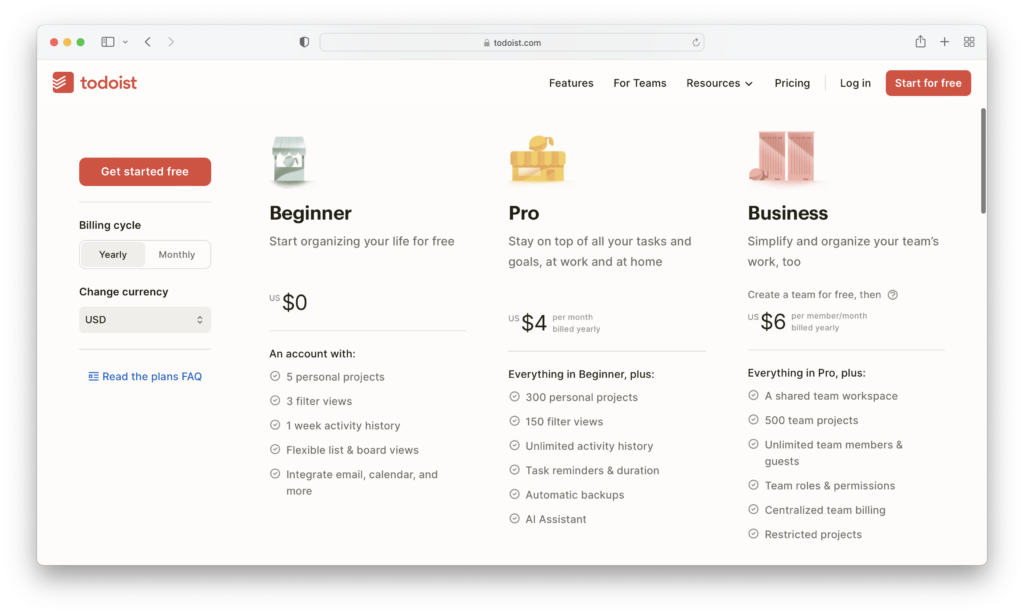
The pricing tiers are followed by a breakdown of the plans and their respective features.
The clear display of an immediate elevation from “5 personal projects” to “300 personal projects” is a great selling tactic that convinces people to go paid.
5. Loom
Loom is a screen recording application. Its features are simple, yet this pricing page makes it look like a must-add tool to your SaaS stack.
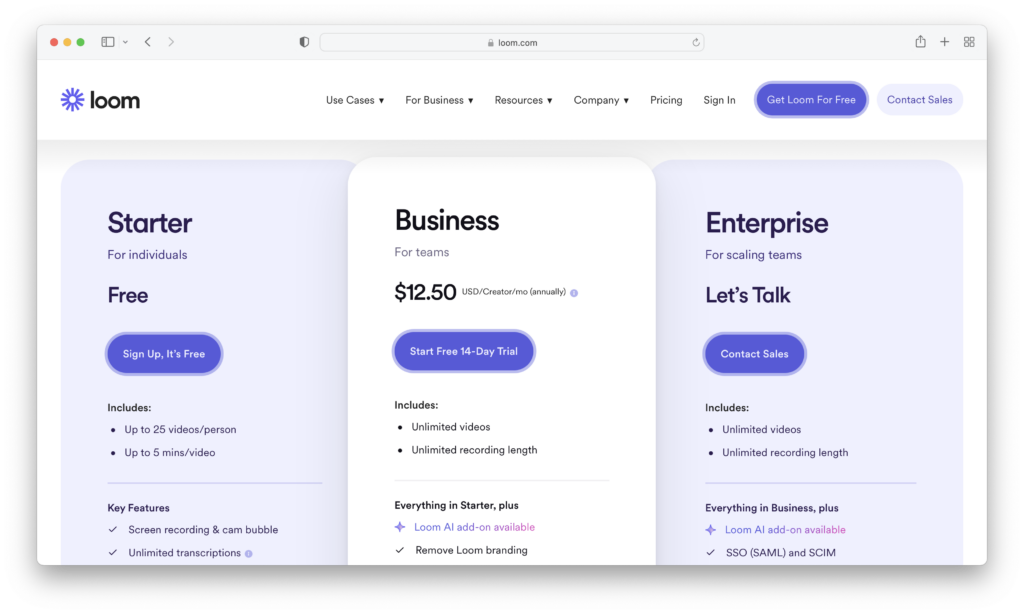
On its pricing page, Loom expands on its benefits, which include privacy, account security, content ownership, etc.
As it hides its enterprise pricing plan, like most SaaS tools do, the Decoy effect kicks in making the standard business plan look innately desirable to the user.
6. Podia
Podia is an online platform to sell courses, host online memberships, and conduct webinars.
When it comes to the pricing page, Podia sticks to a basic three-slab plan, with one free and two paid tiers.
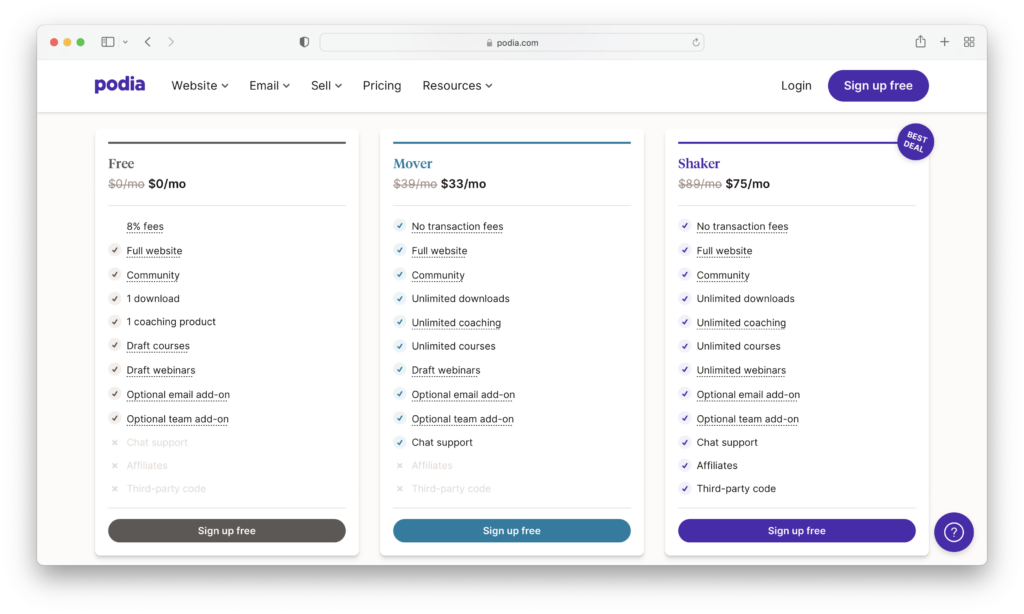
The page unfurls with an unpaid account that comes with a free website, community support, and a host of other exciting features that are farther ahead than what Podia’s competitors offer. This is a flex and a real testament to their product-led marketing.
The two paid plans list the features that users will get, should they become paid members. The features listed below are a great way to contrast with the lack of the free tier.
Other than a simple and user-friendly layout, what stands out is the tongue-in-cheek copywriting that emphasizes the ‘free’ plans. This plays on the Endowment effect, which basically means that it’s easier to convert leads that already own your product.
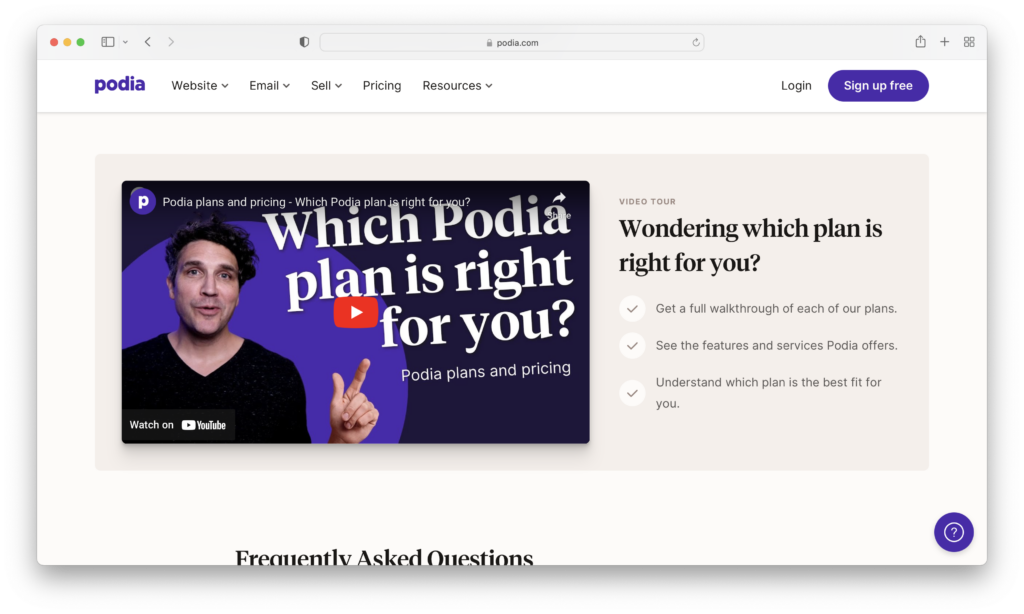
Other than that, what I love the most is their “How to choose the right plan” video, which is a rare form of guiding potential customers.
Great job, Podia.
7. Buffer
Buffer, one of the hottest social media publishing and management tools, doesn’t disappoint when it comes to its pricing page.
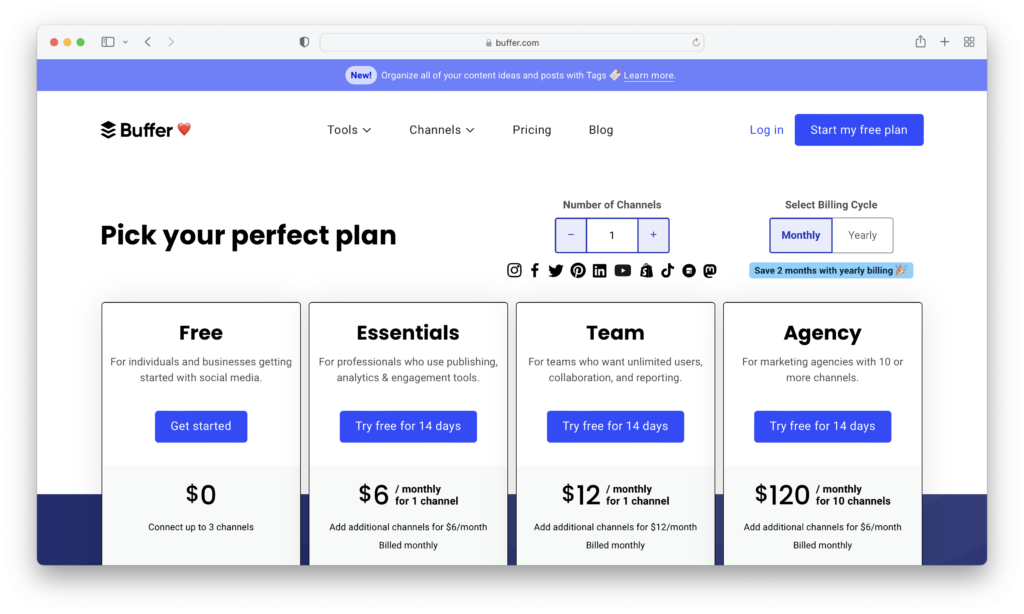
The design is clear, to-the-point, and gives you a bird-eye view of each plan. The pricing page reveals the USP of the tool, which is to build a brand through social media management.
Right from the kickoff, you’re made aware of the use case of Buffer, which comes in handy for multimillion-dollar corporations and micro-niche social media influencers alike.
The page concludes with FAQs, as in most examples.
8. Groundhogg
Groundhogg is a market leader in WordPress automation, with features like funnel creation and email campaigns. It also has one of the best and most fun-to-look-at pricing pages, as it uses the industry-classic competitor’s comparison section to reflect how it’s far and ahead of its peers.
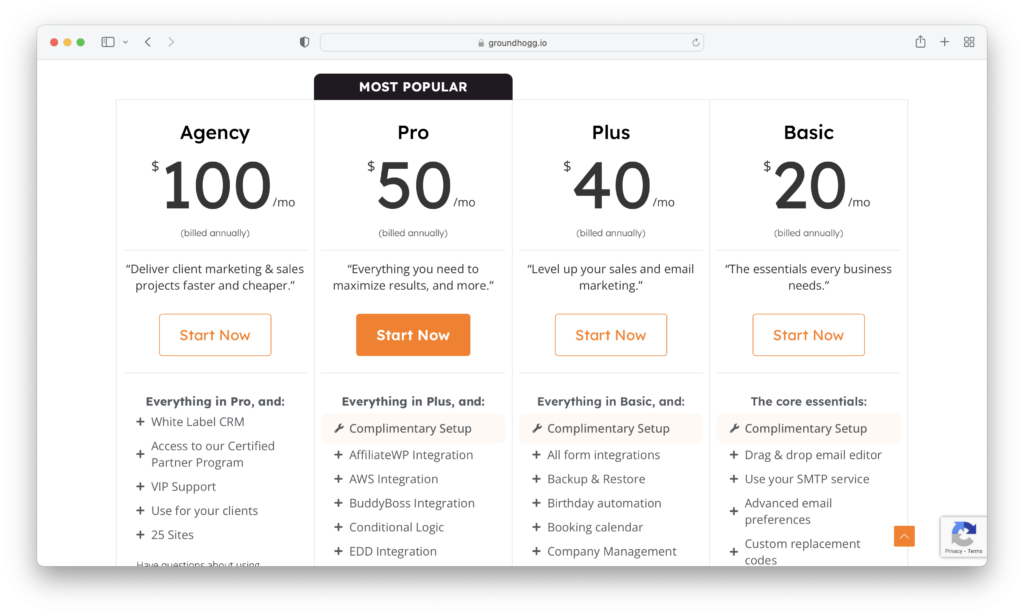
The pricing page of Groundhogg includes four tiers, which can be differentiated by use case and features.
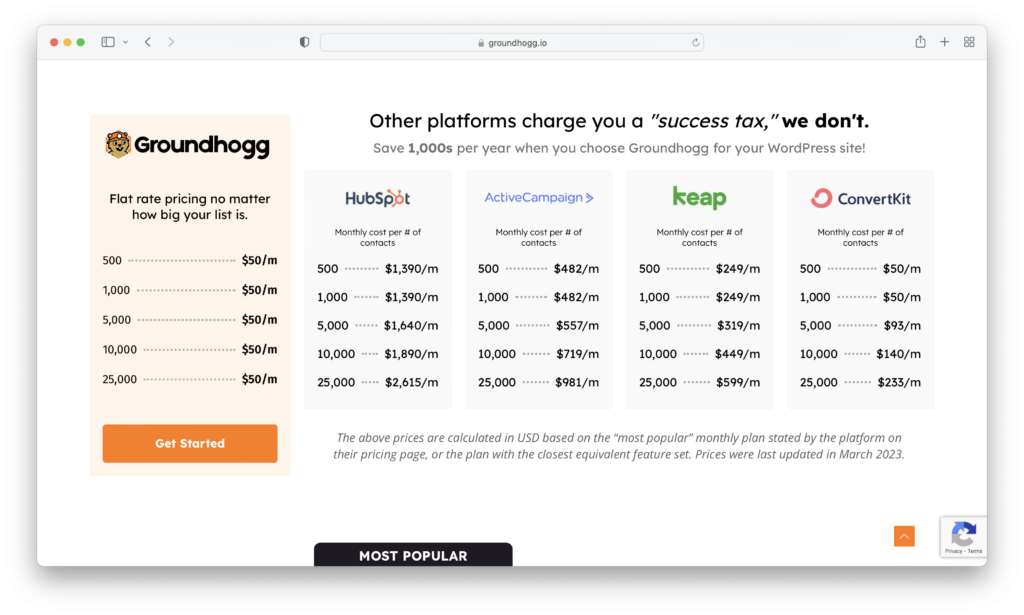
The part that stands out on the pricing page is GroundHogg’s emphasis on removing the “success tax,” which signals a common incremental pricing tactic that scales with usage.
Instead of punishing your business for growing, it supplements it by keeping the pricing fixed. That’s smart and frankly appealing. The comparison box highlights this fixed pricing, in contrast to the soaring competitor pricing model.
Fundamentals of a Pricing Page
Above stated examples illustrate all the major caveats of a pricing page, and how they can maximize conversions. If you’ve scrolled to the bottom, here are some fundamentals of a pricing page that you must consider:
- CTA: The pricing page must have a distinct CTA with a clear directive, and its placement should be mobile-friendly.
- Layout: It must have a user-friendly and easy-to-navigate design with key components such as pricing tiers, testimonials, and FAQ above the fold.
- Copy: The copy must be easy-to-understand language, trust-building, and persuasive. Terms like “live chat” and “free trial,” must be highlighted front and center, and the tone of voice must be aligned with the rest of the website.
- Pricing Tier: The pricing options and tiers must be clear, and they must cater to different buyer personas, as determined by customer interviews.
Pricing Page Checklist
- “Try Free” CTA/Free Trial option (especially for PLG SaaS businesses)
- Value proposition of your product
- Clean pricing cards
- Selector for customizable plans
- Annual discount option
- Feature sets table
- Guide on “How to choose the right plan?” in video or text format
- Comparison articles or tables
- Testimonials
- FAQs
- “Contact Sales” option (because it is always important to be sales-assisted)
Accelerate Revenue With the Right Pricing Page
Getting the pricing page right for your SaaS brand can be a long-winded process that involves lots of A/B testing, competitor study, customer interviews, and market knowledge.
Your goal should be about making progress with timely iterations.
We hope these examples were enough for you to get started, or find the right direction! See you soon 👋
Further Reading 📚
Product-Led Growth for SaaS Companies
Frequently Asked Questions
What is a pricing page?
A pricing page presents a listing of pricing ranges for the product/services. The pricing is adjacent to the benefits and features of each tier. Along with educating the lead about the pricing plans, the page also collects impressions about leads who have checked out the page.
How to design a pricing page for SaaS?
The design of a pricing page comes down to a combined analysis of the target market, competitor price, macroeconomic trends, revenue per customer, and the total operational cost of the product/service.
How do you optimize a pricing page?
A quick and fail-sure way to optimize a pricing page is by assessing current user behavior, answering burning customer questions, limiting pricing options, and keeping the social proof front and center.
What are the best practices for high-converting pricing pages?
Highly converting pricing pages keep their design simple, offer only a select range of pricing plans, contrast the price with a range of features, and use a range of buyer psychology tools such as the Decoy Effect, Endowment Effect, etc.


